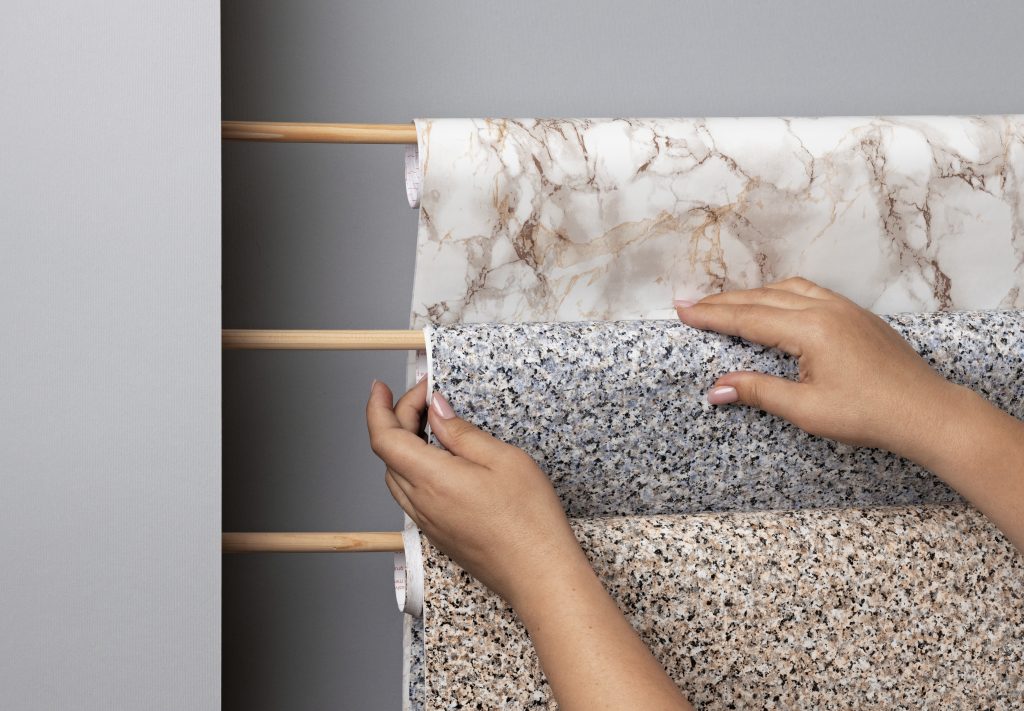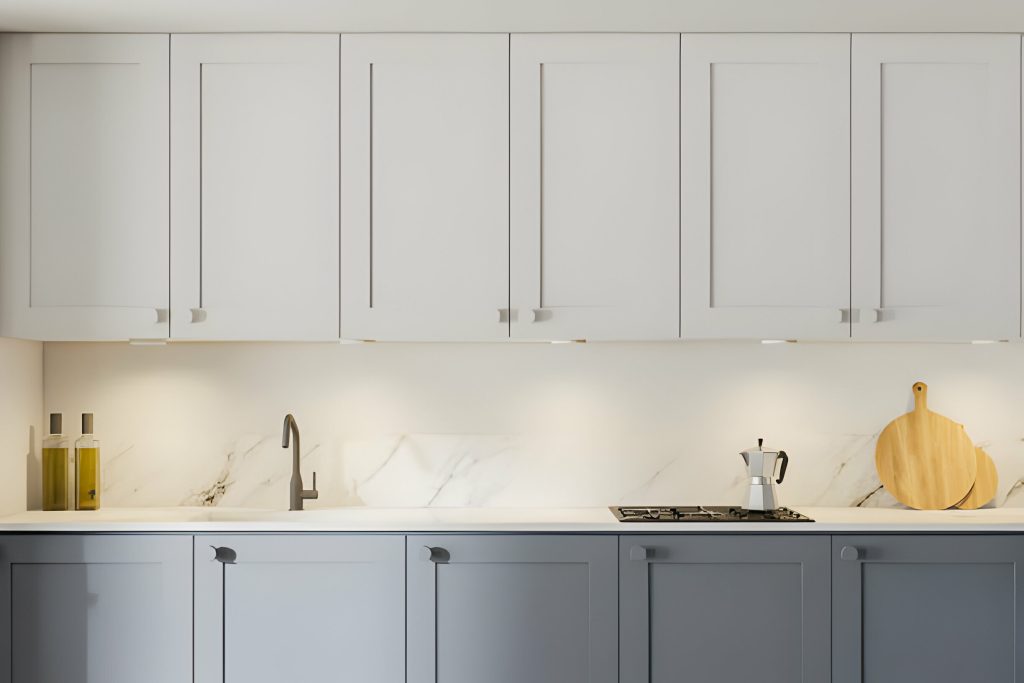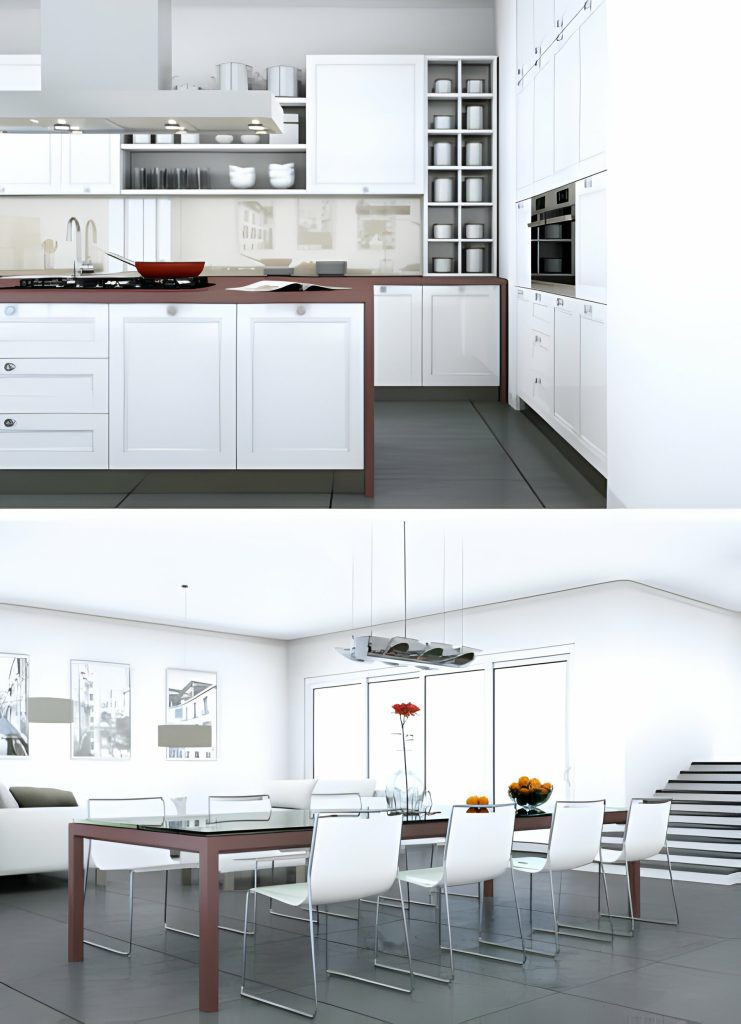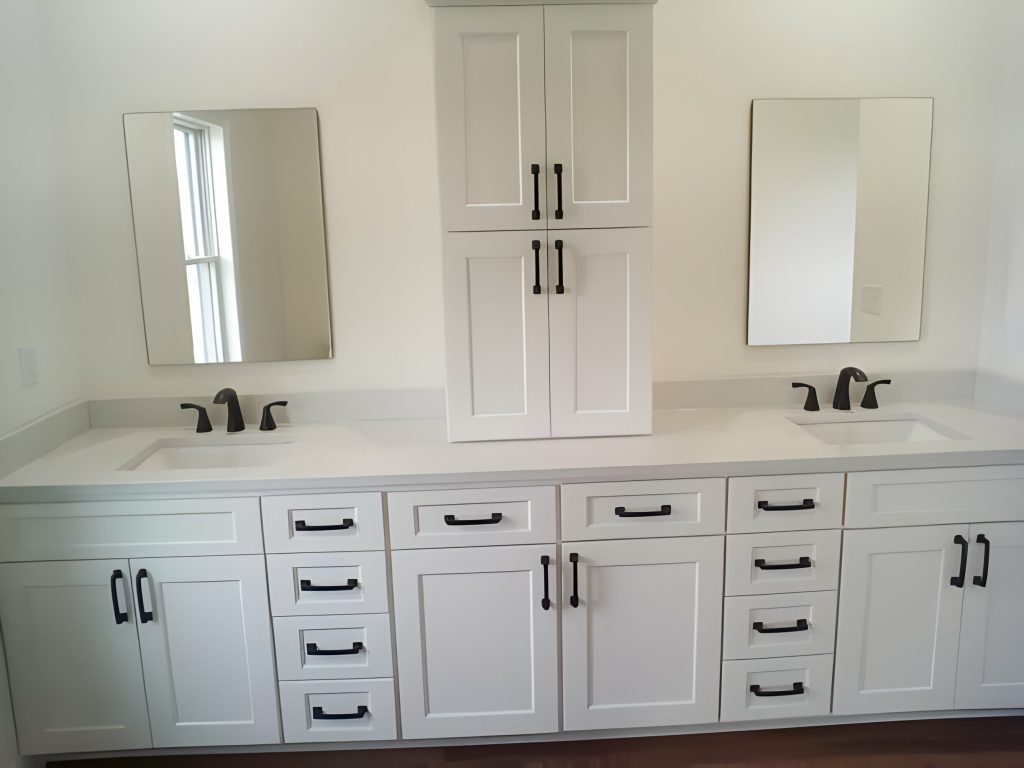Are you aware that thermofoil kitchen cabinets are a popular choice among homeowners, with over 40% of kitchens in the United States featuring this material? While thermofoil cabinets have their advantages, it is important to consider their potential disadvantages as well. From susceptibility to water damage and chipping along the edges, to a limited lifespan and vulnerability to heat exposure, there are several factors to take into account. In this discussion, we will delve into these disadvantages and explore why thermofoil cabinets may not be the ideal option for your kitchen.
Limited Design Options
When it comes to thermofoil cabinets, one drawback that you may encounter is the limited design options available. Thermofoil cabinets typically come in solid colors or faux wood grain patterns, which may not offer the level of customization that some homeowners desire. While there is a wide range of color options to choose from, the choices for components like crown molding and door styles may be more restricted compared to other cabinet materials.
If you are looking for a custom design or unique aesthetic for your kitchen, thermofoil cabinets may not be the best choice. However, it’s important to consider the cost comparison and maintenance tips when making your decision. Thermofoil cabinets are generally more affordable than painted cabinets, making them a cost-effective option for those on a budget. Additionally, they are easy to clean and maintain, requiring only a quick wipe to keep them looking their best.
If limited design options are a concern for you, there are alternative materials like painted cabinets that offer more versatility and flexibility in design. It may be worth considering customer reviews and consulting with a professional to explore all your options before making a decision.
Susceptible to Water Damage
If you choose thermofoil cabinets for your kitchen, it’s important to be aware that they are susceptible to water damage. While thermofoil is durable and resistant to everyday wear and tear, exposure to excessive moisture can cause the thermofoil coating to peel, melt, or blister. This can lead to unsightly and irreversible damage to your cabinets.
To mitigate the risk of water damage, there are a few maintenance tips you can follow. First, avoid placing thermofoil cabinets near sinks or other areas where water is likely to splash. Use a damp cloth to quickly wipe up any spills or splashes to prevent prolonged exposure to moisture. Additionally, consider using potential alternatives to thermofoil cabinets that are more resistant to water damage, such as painted cabinets or cabinets made from solid wood.
When considering the cost comparison between thermofoil cabinets and other options, keep in mind that thermofoil cabinets are generally more affordable. However, it’s important to weigh the pros and cons and consider the potential long-term costs of repairing or replacing thermofoil cabinets due to water damage.
Customer experiences with thermofoil cabinets and water damage vary. While some may have had no issues with water damage, others have reported problems such as peeling or blistering of the thermofoil coating. It’s important to consider these experiences and make an informed decision based on your specific needs and circumstances.
Dull Yellow Appearance Over Time
Thermofoil cabinets can develop a dull yellow appearance over time, diminishing their aesthetic appeal. This discoloration is caused by a combination of factors, including exposure to sunlight, heat, and certain cleaning agents. The yellowing effect is more noticeable on lighter-colored thermofoil cabinets.
Refinishing options for thermofoil cabinets are limited due to the nature of the material. Unlike wood cabinets, thermofoil cannot be sanded down and restained. In most cases, the only solution is to replace the affected cabinet doors. This can be costly and time-consuming.
To prevent or minimize the dull yellow appearance, it is important to take proper care of thermofoil cabinets. Here are some maintenance tips:
- Avoid using abrasive cleaners or harsh chemicals that can cause damage to the thermofoil surface.
- Clean the cabinets regularly with a mild soap and water solution.
- Use a soft cloth or sponge to gently wipe the cabinets, avoiding excessive scrubbing.
- Protect the cabinets from direct sunlight by using curtains or blinds.
- Avoid placing hot objects directly on the thermofoil surface to prevent heat damage.
If you are concerned about the potential for discoloration and the limited refinishing options of thermofoil cabinets, you may want to consider alternative cabinet materials such as painted cabinets or solid wood cabinets. These options offer more flexibility in terms of design and refinishing possibilities.
Relatively Short Lifespan
To add to the drawbacks of thermofoil cabinets, it is important to note that they have a relatively short lifespan compared to other cabinet materials. While thermofoil cabinets offer affordability and easy maintenance, their limited customization options and longevity concerns make them less desirable for some homeowners. Thermofoil cabinets have a lifespan of about 10 years, which is shorter than solid wood cabinets. Additionally, these cabinets are vulnerable to heat damage, which can cause the thermofoil coating to melt, peel, or blister. Refinishing thermofoil cabinets is also challenging, as repairs are almost impossible and replacement is often necessary.
Considering these factors, it is crucial to carefully weigh the pros and cons before choosing thermofoil cabinets for your kitchen. If customization options, long-term durability, and easy refinishing are important to you, you may want to explore alternative cabinet materials such as painted cabinets.
Damage From High Temperatures
Damage from high temperatures can significantly impact the performance and appearance of thermofoil cabinets. Thermofoil cabinets are vulnerable to heat damage and can delaminate from excessive heat exposure. The steam from kitchen appliances can cause the thermofoil coating to melt, peel, or blister, leading to unsightly and irreversible damage. To prevent this, it is important to take precautions and avoid exposing thermofoil cabinets to high temperatures. Here are some maintenance tips to consider: 1) Use heat-resistant mats or trivets to protect the cabinet surfaces from direct contact with hot pots, pans, and appliances. 2) Ensure proper ventilation in the kitchen to dissipate heat and prevent it from accumulating around the cabinets. 3) Regularly check for signs of heat damage, such as bubbling or discoloration, and address them promptly. If you are concerned about the dangers of heat exposure and want to avoid potential damage to your cabinets, you may consider alternatives to thermofoil cabinets. Painted cabinets, for example, offer a wider range of customization options and are generally more resistant to heat. However, it is important to weigh the long-term cost considerations and the impact on resale value before making a decision.
Plain and Impersonal Design
When it comes to the design of thermofoil cabinets, one drawback to consider is their plain and impersonal appearance. Thermofoil cabinets typically lack the customization options and intricate details that can be achieved with other materials. Here are some key points to keep in mind regarding the plain and impersonal design of thermofoil cabinets:
- Limited custom design options: Thermofoil cabinets offer fewer choices for components like crown molding and door styles. This can make it challenging to create a unique and personalized look for your kitchen.
- Lack of refinishing options: Unlike other materials, thermofoil cabinets are difficult to refinish. Repairs are almost impossible, and replacement is often necessary if the cabinets become damaged or worn over time.
- Cost considerations: While thermofoil cabinets are generally more affordable than painted cabinets, the lack of custom design options and limited refinishing options may make them less cost-effective in the long run.
- Alternative materials: If you desire a more customized and personalized look for your kitchen, you may want to consider alternative materials such as painted cabinets or wood cabinets. These options offer more versatility and flexibility in design, as well as easier maintenance and refinishing options.
Limited Durability in Humid Conditions
Limited durability in humid conditions is a concern when it comes to thermofoil cabinets. While thermofoil cabinets are generally resistant to regular household damage, they can be vulnerable to moisture. The high humidity levels in kitchens, especially near sinks and dishwashers, can cause the thermofoil coating to peel, bubble, or warp. This can lead to a dull and unattractive appearance, compromising the overall aesthetic of the cabinets. Additionally, the MDF substrate used in thermofoil cabinets can be prone to swelling and warping when exposed to moisture, further diminishing their durability.
To overcome the limitations of thermofoil cabinets in humid conditions, it is important to consider alternative materials that offer better moisture resistance. One option is to choose painted cabinets, which can be made from MDF or birch with a smooth and uniform surface. Painted cabinets, although more expensive, are easier to touch up and refinish compared to thermofoil cabinets. Another alternative is to invest in solid wood cabinets, which are naturally more resistant to moisture and offer long-term durability.
When comparing the cost of thermofoil cabinets to alternative materials, it is essential to consider the long-term investment. While thermofoil cabinets may be more affordable upfront, their limited durability in humid conditions may require more frequent replacements or repairs, leading to additional expenses in the long run. Therefore, it is crucial to weigh the cost comparison and consider the overall maintenance and durability when choosing kitchen cabinets.
To summarize, limited durability in humid conditions is a downside of thermofoil cabinets. Considering alternative materials with better moisture resistance, such as painted cabinets or solid wood cabinets, can ensure a longer-lasting and more durable kitchen cabinet solution.
Limited Availability and Affordability
Thermofoil cabinets may have limitations in terms of availability and affordability. While they are widely available at large home improvement stores, their selection may be limited compared to other types of cabinets. Additionally, the affordability of thermofoil cabinets can be a concern for some homeowners, especially when compared to alternative options like painted cabinets or solid wood cabinets.
Here are some key points to consider regarding the limited availability and affordability of thermofoil cabinets:
- Limited availability: Thermofoil cabinets may have fewer design options and choices compared to other types of cabinets. This can limit your ability to create a customized look for your kitchen.
- Affordability concerns: Although thermofoil cabinets are generally more affordable than solid wood cabinets, they can still be more expensive than alternative options like painted cabinets. It’s important to consider your budget and compare the long-term cost of thermofoil cabinets with other options.
When considering thermofoil cabinets, it’s also essential to keep in mind the maintenance tips to ensure their longevity and durability. Regular cleaning with a mild detergent and a soft cloth is recommended to prevent dirt and grime buildup. Avoid using abrasive cleaners or scrub brushes that can damage the thermofoil coating.



